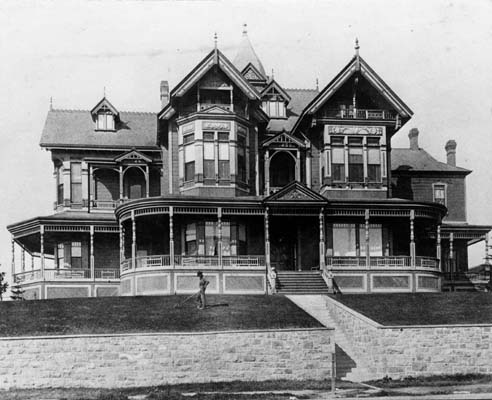The demise of Bunker Hill conjures up image of bull dozers doing the bidding of the Community Redevelopment Agency, leveling the landscape of the once colorful and picturesque neighborhood. While the CRA’s master plan dealt the final blow to Bunker Hill, the demolition of victorian structures in the area had been taking place for decades. The Brunson Mansion at the corner of Fourth Street and Grand Avenue was an imposing structure that seemed destined to stand indefinitely. Instead it would last less than four decades and become an early victim of the City’s obsession with the automobile.
The residence known as the Brunson Mansion was built in the early 1880s by Judge Anson Brunson who resided on the bench of the Los Angeles County Superior Court before stepping down to serve as a lawyer for the lucrative Santa Fe Rail Road. According to the L.A. Times, the residence was “a dark red house, large, compact, dignified, in the center of sloping lawns walled up above the level of three streets.” The house was so large it had a Bunker Hill Avenue and a Grand Avenue address, before settling on 347 South Grand as its official label.
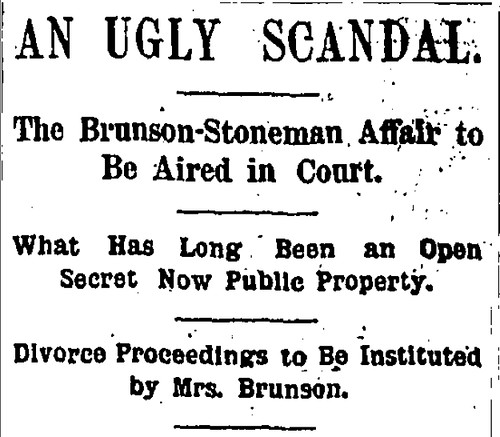
The Judge resided at the home with his wife Angela until the early 1890s when details of his torrid affair with the widow of a Civil War General came to light. In December 1892, Mrs. Brunson filed for divorce on the grounds of desertion, extreme cruelty and adultery. She was supposedly in possession of hotel registers and love letters, one of which read like “an extract from a French novel,” documenting the relationship between her 60 year old husband and Mrs. General George Stoneman, 10 years his junior. The Judge had left the Grand Ave property and taken up residence on Flower Street and Mrs. Brunson stayed in the mansion until she was forced to sell it in 1894. While Judge Brunson denied the existence of a romantic relationship between him and Mrs. Stoneman, when he died in October 1894, he left all his possessions to “my dear and faithful friend, Mary O.H. Stoneman.” Years after the mansion was long gone, locals felt that the “ghosts of unhappinesses remained there,” haunted by “the husband and wife who for years lived as strangers under the same stately roof.”
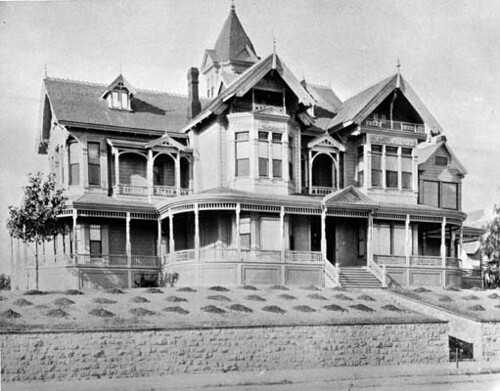
One of the mansion’s next owners was Dr. B.F. Church, who with his wife, used part of the house as their residence where numerous social gatherings were held. The doctor converted the other part of the house into the short-lived Los Angeles Eye, Ear & Throat Hospital aka The Eye and Ear Infirmary until 1901. Eighteen years later, B.F. Church, who had suffered years of mental problems, would throw himself out of an office window at 7th and Grand, plummeting to his death in front of a lunchtime crowd.
In the early years of the new Century, the 18 room property became the Hotel Brunson. Its thirteen years as a boarding house would see little incident other than almost getting burned down by a wayward firecracker in 1904, and the shooting of a burglar by a hotel resident in 1909 (the police followed the trail of blood and apprehended the suspect at his nearby home).
By 1917, the automobile had come to Bunker Hill and the owners of the property at 347 South Grand decided that a two story brick garage would be more lucrative than a hotel. In April of that year, the furnishings of the Brunson Hotel were auctioned off, and stately structure which was once a “show place of the city” was demolished and replaced by an auto mechanic.

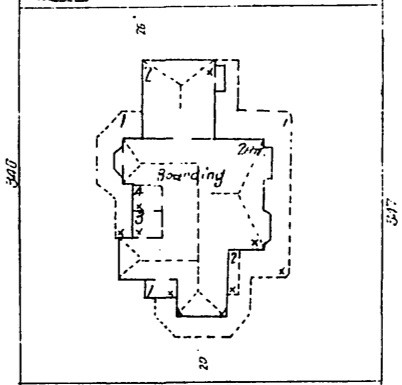
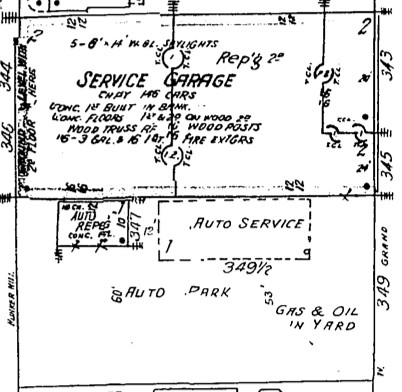
Three views of the Brunson Property 1894, 1906 & the garage in 1950
All photos courtesy of the Los Angeles Public Library Photo Collection
All quotes from the Los Angeles Times
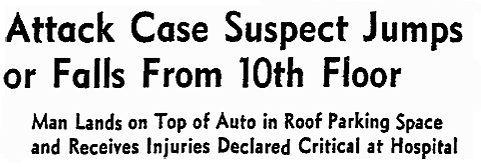



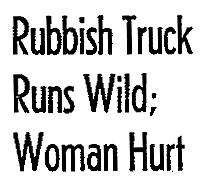
 When it rains, it pours. Which is probably a good thing, since rain will put out all that pesky fire.
When it rains, it pours. Which is probably a good thing, since rain will put out all that pesky fire.
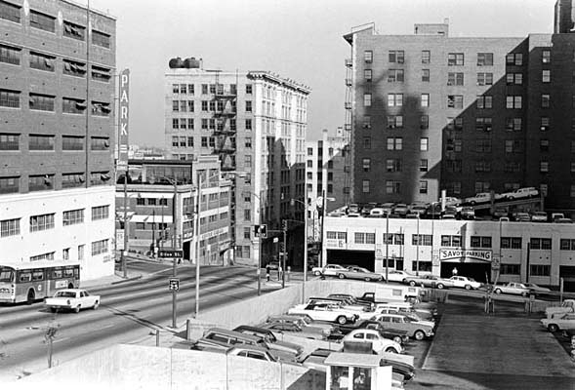
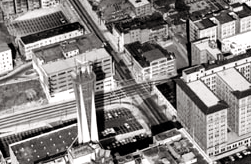 Remarkably, the Savoy still stands. The 600-car Mutual at left in the image above is now the foundation for
Remarkably, the Savoy still stands. The 600-car Mutual at left in the image above is now the foundation for 